Chickens and poultry are probably the most widespread of all domestic animals. There are few farms or smallholdings that do not keep chickens for personal use, and the number of back-garden poultry keepers must be very great. Added to this are the large commercial poultry - keepers who practice intensive specialisation in various branches of the work; for example, hatching, laying battery systems etc. There are more people engaged in poultry keeping than in any other form of livestock husbandry.
Description
The cockerel (male) has a larger comb on top of his head than the hen (female) and also has hackles of long feathers. Hanging from the chicken's throat is often found two thick red pieces of flesh called the wattles. The tail feathers of the cockerel are larger and more resplendent than those of the hen. There are more than one hundred different varieties of domestic fowl, but many of these are rare and specialised. Many hybrids have now been produced for egg and table purposes, but it is recommended a school should buy pure bred stock. One should become familiar with the special properties of a good - quality bird, i.e. good stance with an erect head, well spread legs, deep long body, flat back, long deep breast, bold prominent bright eyes and keen, alert appearance.
The Egg
Everybody is familiar with a hen's egg. The true egg or ovum is a microscopically small structure. It is surrounded by large yellow yolk, which is in reality a reserve of food for the developing embryo. This in turn is surrounded by another food reserve - the albumen or white composed almost entirely of protein substances. Surrounding these are two membranes and the whole is enclosed in the porous calcareous shell. Between the two membranes at the broad end is an air-space which provides air for the young chick to breathe. The porous shell also allows air to pass through during the development of the embryo. When eggs are preserved the shell pores are blocked up by the preservative, thus preventing the entry of any air which might cause decomposition. The yolk is maintained in suspension at the centre of the white by strands of albumen known as chalazae. There are two of these (one either side of the yolk along the horizontal axis of the egg). These keep the yolk always in the middle, irrespective of the movement of the egg.
Incubation
Many schools have their own small electrically heated incubators. The most popular in use are the observational incubators, in which the whole of the upper part of the machine is made of moulded transparent Perspex to permit observation of the whole hatching process. They can hold between fifty and sixty eggs arranged in rows. Most children, after a little practice, become adept in regulating the temperature and in turning the eggs to ensure that they are heated evenly. This turning action also prevents the young embryo from adhering to the shell membrane. A broody hen constantly turns the eggs with her beak and feet. So eggs should be turned in the incubator three or five times a day. Some incubators have automatic turning mechanisms. The temperature scale usually starts at 100°F (38°C) in the first week, decreases half a degree to 99°F (37°C) in the second week and remains at 99°F (37°C) in the third.
It is important to understand what is happening inside the egg during the different stages. This will involve learning the main facts about the composition of the egg, including the structure and function of its various parts in the formation of the new chick.
Hatching begins about three weeks after the start of incubation, and it is fascinating to see the young peck their way through the shells to emerge as new chicks. The chick is adequately fitted by nature to penetrate the shell, for it is equipped with a strong egg tooth at the point of the upper beak. After the bird is hatched the egg tooth disappears. Unlike the young of other birds, the chick is able as soon as it is hatched to begin eating solid foods.
Brooding
After hatching, and when the chicks are dry, they should be taken from the incubator, where the environment will be most unsuitable for them. They should be transferred direct to a brooder. This is a device specially designed to give young chicks the right environment to accelerate their growth, especially the correct amount of heat and ventilation.
There are many types of brooder. A common type is the hovver, which consists of a conical metal canopy with a thermostatically controlled electrical heating unit. Temperature is maintained at between 90°F and 95°F (32°C and 35°C.). Draughts are excluded by means of a wooden surround about 18 inches high. Freedom from draughts is necessary for any type of brooder to prevent the risk of chills. The dull-emitter infrared lamp is a very convenient form of heating unit. It is small, easily movable and can be fitted to a large box which has sufficiently high sides to exclude all draughts.
For the first few days of brooding chicks are confined to a small area under the heaters. Cardboard strips enclosing an area 3 feet in diameter can hold some fifty chicks. After a few weeks chicks can be given the free run of the chicken house. Chicks intended for laying should be transferred out of doors so that with fresh air and exercise their stamina becomes well established.
The chicks should be weighed regularly every day, and the increase in consumption of food should be related to the accompanying change in weight. It is useful to draw a graph showing the relationship.
Growing Birds
When chicks are removed from the brooders, they are referred to as "growers". In this term is included all the young stock from about eight to twenty weeks old. There are two methods of rearing growers - either on free-range or in confinement. Free-range is possible only where there is abundant land available. At least 1 square yard per bird is required. The growers should be given fresh land to prevent any possibility of infection from adult birds. Night arks or range shelters are needed. These can be made in school. The Sussex night ark (6 feet by 3 feet) has a slatted floor and a full span roof. If there is any danger of chilling, a hurricane lamp can be hung in the ark for about a week, or the floor can be covered in straw.
The range shelter consists simply of a series of perches under a low apex roof. The sides are covered with 1 inch mesh wire netting, and there is a wide door at each end.
Feeding
Good balanced feeding is essential for success in chick rearing and egg production. Their food has to provide the material for growth, for the maintenance of the body and for the manufacture of the eggs. A "maintenance ration" may be sufficient for normal living, but for egg manufacture a surplus (or "production ration") is required. Without adequate "production ration" the egg yields will decline. The chief aim is to provide a balanced ration, which will satisfy the particular needs of the birds according to their age and function. The standard ration is usually composed of specially produced pellets, mixed with quantities of wheat.
Obviously the ration must be adapted to the particular purpose in view, whether this is maintenance, growth, egg production, hatching or fattening. Each of these aims will require a different proportion of proteins, carbohydrates, fats, minerals, vitamins and water. But in addition to content food must be made palatable and digestible by ensuring that its physical condition is fresh. Water is essential as it plays an important role in the hen's body processes. There should always be an abundant supply of fresh water available, since its lack will arrest the growth of the young stock and check the laying of the egg producers. Poultry can survive several days without food, but will die in a day or two without water. This is because water constitutes some 60% of the body.
Grit is another essential element in the life of poultry. As they do not possess teeth, the trituration (or grinding down) of foodstuffs must take place in the gizzard. This is a thick-walled sac which follows the stomach in the alimentary canal, containing stones and various forms of grit to assist in the mastication of the food. Hence grit should always be available.
Grit consists of two kinds and these should be given in separate containers: (a) the soluble grit, containing a high proportion of calcium in the form of limestone grit, oyster shell or cockleshell, which dissolves in the gizzard to supply calcium for bone and eggshell formation, and, (b) the insoluble grit, such as flint, granite, small pebbles, gravel, or sand, which assists in crushing, grinding and cracking food particles before digestion takes place.
Passing from the mouth, the food does not go straight to the stomach as it does in mammals, but is stored in a compartment called the crop, situated inside near the base of the neck. Eventually the food passes from here along the alimentary canal into the "stomach" (proventriculus), where it is mixed with the digestive juices. Then it passes to the gizzard in the middle of the body. Here, with the help of strong muscular walls and the stones and the grit swallowed by the bird, the gizzard grinds the food into a pulp, which then passes further along the alimentary canal to be completely digested and absorbed into the bloodstream.
Records
Accurate records must be kept regularly. These are very valuable for future information and reference. There are two types of records:
- Those connected with foodstuffs; for example, the quantities of meal consumed in daily, weekly and monthly periods.
- Those checking the productive performance of stock. The egg production record is most important. It shows the totals recorded for each day, month and year. The data can include the number of the house, the number of birds in each pen, the breed or cross, the date of hatching, the monthly egg totals and the grand total to date.
Test your knowledge
Can you answer these questions?
- What differences can be seen between a male and female chicken?
- What are the special properties of a good quality bird?
- Which two reserves of food are present in an egg?
- How is the yolk of the egg kept in the middle and why is this important?
- How does a chick break free from the egg?
- What should the chicken food provide?
- What is the function of the gizzard?



